
The Murex Training Program provides comprehensive insights into the Murex platform, covering front-to-back trade processing, risk management, collateral optimization, and regulatory reporting. Participants gain practical skills in trade booking, workflow configuration, MxML integration, and advanced risk analytics. The course is designed for professionals in trading, operations, risk, and IT, helping them master Murex functionalities and drive efficiency across capital markets operations. Suitable for both beginners and experienced users.
Murex Training Interview Questions Answers - For Intermediate
1. What is the role of static data in Murex?
Static data in Murex refers to reference data that remains relatively stable over time, such as counterparty details, holiday calendars, instrument definitions, settlement instructions, and market conventions. This data is crucial for the accurate booking, valuation, settlement, and reporting of trades. Static data must be properly maintained and synchronized with other systems to avoid errors in trade processing and regulatory reporting.
2. Explain Murex’s support for cross-asset trading.
Murex is designed to handle cross-asset trading by providing a single platform that supports various asset classes, including interest rate derivatives, FX, equities, credit, commodities, and hybrids. Its unified data model, risk engine, and workflow framework allow users to manage complex portfolios with multi-asset strategies. This capability helps firms optimize trading and risk management across the entire enterprise.
3. What is Murex’s approach to P&L attribution?
Murex provides detailed tools for P&L attribution, allowing users to decompose profit and loss into key contributing factors such as market moves, new trades, time decay, and model changes. The system can generate P&L explain reports, both intraday and end-of-day, helping risk and finance teams understand portfolio performance and verify the accuracy of valuations.
4. How does Murex manage version control for trades?
Murex maintains version control by recording each modification made to a trade in an audit trail. Every time a trade is amended, a new version is created while retaining the full history of prior versions. This allows for comprehensive traceability, supports compliance and auditing requirements, and helps resolve disputes by reconstructing the lifecycle of a trade.
5. What is the importance of Market Data Snapshots in Murex?
Market Data Snapshots in Murex capture the state of market data—such as prices, curves, and volatilities—at a specific point in time. These snapshots are essential for consistent risk and P&L reporting, especially for end-of-day processes. They enable firms to reconcile reported figures, reproduce calculations during audits, and ensure alignment with accounting and regulatory standards.
6. How does Murex handle trade life cycle events?
Murex provides full life cycle management for trades, covering events such as trade booking, validation, novation, confirmation, settlement, corporate actions, and termination. The system automatically generates life cycle events based on product definitions and business rules, and users can monitor and manage these events through the workflow engine, ensuring efficient and controlled processing.
7. What is the Murex formula language used for?
The Murex formula language is a flexible scripting language used to define pricing models, risk measures, and custom calculations. It allows users to configure formulas for product valuation, limit checks, scenario analysis, and reporting fields. The language supports complex mathematical and logical expressions, enabling firms to tailor Murex behavior to their specific risk and pricing requirements.
8. How are interfaces tested in a Murex implementation?
Interfaces in a Murex implementation are typically tested through unit testing, integration testing, and user acceptance testing (UAT). Unit testing ensures the interface code functions correctly in isolation. Integration testing verifies that Murex can exchange data correctly with upstream and downstream systems (such as market data feeds, payment systems, and accounting platforms). UAT confirms that the interface meets business requirements and operates reliably in production-like scenarios.
9. What is the purpose of Murex’s Accounting module?
The Accounting module in Murex generates accounting entries based on trade and cash flow events, adhering to predefined accounting rules. It supports IFRS and local GAAP requirements and allows mapping to external general ledger systems. The module ensures accurate, auditable accounting that reflects the economic reality of trading activities, facilitating financial control and regulatory compliance.
10. How does Murex handle collateral optimization?
Murex’s collateral optimization tools help firms allocate the most efficient collateral to margin calls by considering factors such as eligibility criteria, haircuts, liquidity, and cost of funding. The system evaluates available collateral across legal entities and accounts, aiming to minimize collateral costs while ensuring regulatory and contractual compliance. This optimization enhances capital efficiency and risk management.
11. Describe the Murex batch processing framework.
Murex’s batch processing framework allows the scheduling and execution of background tasks such as risk calculations, trade revaluations, report generation, and data feeds. These batches can be configured to run during off-peak hours (such as end-of-day or overnight) to avoid impacting interactive system performance. Batch processing ensures that critical data is updated regularly and available for operational and regulatory needs.
12. How is exception management handled in Murex?
Murex supports exception management by providing tools to monitor, flag, and resolve issues that arise during trade processing, settlement, or reporting. Exception queues and dashboards display incomplete or erroneous transactions, enabling users to prioritize and resolve them. Automated alerts can be configured to notify responsible teams of critical issues, ensuring operational resilience and data integrity.
13. What is sensitivity analysis in Murex?
Sensitivity analysis in Murex evaluates how changes in market factors (such as interest rates, FX rates, or volatility) affect the value of a portfolio. The system can compute key sensitivities like delta, gamma, vega, and rho across different asset classes. This analysis helps risk managers understand the portfolio’s exposure to market movements and informs hedging and risk mitigation strategies.
14. How does Murex manage user access and security?
Murex implements robust user access and security controls through role-based access, user groups, and granular permission settings. Administrators can define which users can view, modify, or execute functions at the module or field level. Additionally, Murex supports audit logging of user actions, encryption of sensitive data, and integration with enterprise identity and access management (IAM) systems for centralized control.
15. What is the role of pricing templates in Murex?
Pricing templates in Murex define the configuration and methodology used to price financial instruments. They specify the curves, market data sources, models, and calculation parameters applicable to each product. Templates ensure consistency in pricing across the organization and can be version-controlled to track model changes. This framework allows flexibility while maintaining control over pricing practices.
Murex Training Interview Questions Answers - For Advanced
1. How does Murex handle intraday risk monitoring for trading desks?
Murex provides sophisticated intraday risk monitoring capabilities by leveraging its real-time risk engine. As trades are booked, modified, or canceled, the risk engine recalculates position exposures, Greeks, sensitivities, and P&L impacts dynamically. Market data updates—such as prices, volatilities, and curves—also trigger real-time recalculations. Traders and risk managers can view live dashboards with position drilldowns, limit utilizations, and potential exposure under various scenarios. Murex also supports intraday VaR and incremental risk charges (IRC), which are vital for high-frequency and volatile trading environments. The system’s architecture, which uses in-memory caching and parallel computing, ensures that even complex portfolios can be monitored continuously throughout the trading day.
2. What mechanisms does Murex provide for market data quality management?
Market data quality is critical in Murex as it underpins valuations, risk metrics, and regulatory reports. Murex provides multiple mechanisms for market data quality management. Incoming data is subject to validation rules (range checks, stale data detection, cross-source verification) before being published to production environments. Historical data is archived to support backtesting and model calibration. Murex supports data enrichment using fallback hierarchies, blending data from multiple vendors when necessary. The Market Data Manager interface provides full transparency and traceability, with audit trails showing who approved or modified data. Automated alerts notify users of anomalies or missing data, and workflow-driven governance ensures that data quality issues are promptly addressed.
3. How does Murex manage model calibration and backtesting?
Murex offers comprehensive tools for model calibration and backtesting. Calibration involves fitting model parameters (such as volatilities, correlations, credit spreads) to market-observed prices of instruments like options or CDS. Murex automates this process using optimization algorithms and provides goodness-of-fit metrics to evaluate calibration quality. For backtesting, Murex allows users to run historical simulations, comparing model outputs (P&L, Greeks, risk measures) against realized outcomes. This process validates model performance and helps identify model risk. Murex also supports version control for models and calibration sets, enabling auditability and governance over model changes, which is essential for compliance with regulatory requirements on model risk management.
4. What is the impact of FRTB's Non-Modellable Risk Factor (NMRF) requirement, and how does Murex address it?
FRTB’s NMRF requirement mandates that banks identify risk factors that cannot be sufficiently modeled due to lack of observable data. These factors attract additional capital charges. Murex helps institutions manage NMRFs by providing tools to classify risk factors, assess data availability, and track modellability over time. Data lineage and auditability features ensure transparency in these classifications. Murex calculates the expected shortfall for both modellable and non-modellable factors and provides scenario analysis to gauge the capital impact of NMRFs. Firms can use Murex’s optimization features to restructure portfolios and improve data coverage to reduce NMRF capital charges.
5. How does Murex handle initial margin calculation under SIMM methodology?
Murex fully supports the ISDA Standard Initial Margin Model (SIMM) for bilateral OTC derivatives. The SIMM framework calculates initial margin based on sensitivities to predefined risk factors, applying standard risk weights, correlations, and aggregation rules. Murex generates these sensitivities through its risk engine and applies SIMM calculations using built-in or user-customized templates. It also supports margin optimization by suggesting trade allocations or compression strategies to reduce margin requirements. The system tracks margin evolution over time and simulates future margin profiles, which is critical for funding and liquidity management. Murex’s integration with collateral management ensures seamless end-to-end workflow for margining.
6. How does Murex support real-time P&L explain?
Real-time P&L explain in Murex decomposes daily and intraday profit and loss into key drivers such as market moves (curve shifts, volatility changes), new trades, trade amendments, time decay, and model adjustments. The P&L explain framework uses consistent valuation methodologies and captures the impact of each market factor or event. Murex supports interactive drilldowns, allowing users to analyze P&L contributions at trade, book, desk, or portfolio level. It also provides what-if simulations to understand how alternative market scenarios would affect P&L. This transparency supports risk control, trading oversight, and regulatory reporting such as Comprehensive Capital Analysis and Review (CCAR).
7. What is the role of curve construction in Murex, and how is it managed?
Curve construction is fundamental in Murex for accurate pricing and risk measurement. Murex supports construction of interest rate curves, FX curves, credit curves, volatility surfaces, and correlation matrices. Users can define curve building rules, choose interpolation/extrapolation methods, and specify bootstrapping instruments (e.g., swaps, futures, bonds). The system supports multi-curve frameworks, crucial for modern pricing of derivatives under CSA discounting. Curve calibration is automated and monitored for stability and accuracy. Murex also supports version control of curves, enabling backtesting and compliance with model governance standards. Real-time curve updates ensure consistent valuation across front, middle, and back-office functions.
8. How does Murex manage dynamic reporting and ad-hoc analytics?
Murex enables dynamic reporting and ad-hoc analytics through its DataMart, Reporting Studio, and simulation frameworks. Users can create custom reports with drag-and-drop interfaces or scripting, combining static data, trade data, and calculated risk measures. Reports can be parameterized, allowing users to filter by date, portfolio, counterparty, or market scenario. Ad-hoc analytics allow users to run on-demand simulations, what-if analyses, and stress tests without affecting the production environment. Reports can be exported to formats such as Excel, PDF, or pushed to enterprise BI platforms. The flexibility of Murex reporting supports agile business decision-making and enhances regulatory responsiveness.
9. Explain the importance of pre-trade checks in Murex and how they are implemented.
Pre-trade checks in Murex ensure that new trades comply with internal policies, risk limits, and regulatory requirements before execution. Murex supports both hard and soft pre-trade checks. Examples include credit limit checks (counterparty exposure), market limit checks (concentration risk), eligibility checks (client or product eligibility), and pricing validation (tolerance against market benchmarks). The system can prevent trades from being booked if limits are breached or flag them for approval through automated workflows. Real-time integration with credit engines, risk engines, and compliance modules ensures that pre-trade checks are comprehensive and up-to-date, supporting proactive risk management and regulatory compliance.
10. How does Murex manage funding and liquidity risk?
Murex provides advanced tools for managing funding and liquidity risk. It supports cash flow projection at granular levels (trade, portfolio, currency, legal entity), incorporating contractual cash flows and contingent events (options, calls). Liquidity buffers, gaps, and stress scenarios can be analyzed to assess short-term and long-term liquidity positions. Murex supports Funds Transfer Pricing (FTP), enabling treasury to allocate funding costs to business lines. Integration with collateral management provides visibility into collateral-driven funding requirements. The platform allows firms to monitor regulatory liquidity ratios such as LCR and NSFR, supporting both internal liquidity risk frameworks and regulatory compliance.
11. How does Murex manage trade compression and optimization?
Murex facilitates trade compression by identifying economically redundant trades and suggesting portfolio restructures that maintain risk neutrality while reducing gross notional. Compression reduces capital consumption, margin requirements, and operational complexity. Murex supports bilateral and multilateral compression workflows, integrating with industry utilities such as TriOptima. Optimization algorithms prioritize compression based on capital efficiency, funding costs, and collateral usage. The system tracks compression history and ensures accurate post-compression reporting. Compression tools are increasingly used to meet regulatory incentives for reducing systemic risk in OTC derivatives markets.
12. How does Murex handle advanced collateral optimization across multiple netting sets and CSAs?
Murex supports advanced collateral optimization by evaluating potential allocations across multiple netting sets, legal entities, and collateral agreements (CSAs). The system calculates eligibility, haircuts, and opportunity costs of collateral. Optimization objectives may include minimizing cost of collateral, maximizing liquidity, or optimizing regulatory capital. Murex considers operational constraints (settlement cut-offs, substitution costs) and supports “what-if” simulations to test optimization strategies. The optimization engine can generate executable proposals, which are routed through approval workflows and settlement instructions. Real-time optimization enables dynamic response to market events or margin calls, ensuring efficient use of collateral inventory.
13. How does Murex integrate with enterprise data lakes and big data platforms?
Modern Murex implementations increasingly integrate with enterprise data lakes (Hadoop, Spark, cloud-native stores) to support advanced analytics, machine learning, and regulatory reporting. Murex can stream transactional and risk data to data lakes via APIs or batch exports. Data lineage and metadata tagging ensure consistency across platforms. Integration allows institutions to augment Murex outputs with external data (client behavior, ESG factors), enabling richer insights. Big data processing supports complex use cases such as intraday liquidity analytics, trade surveillance, and stress scenario simulations. Data governance frameworks ensure data quality and compliance when using Murex data in broader enterprise ecosystems.
14. How does Murex handle margin simulation for front office decision support?
Murex provides front office users with margin simulation tools to forecast initial and variation margin impact of proposed trades or portfolio changes. Traders can run pre-trade margin impact analysis under SIMM or CCP margin methodologies. Margin sensitivity analysis shows how margin would change with market moves, helping optimize trading and hedging strategies. Scenario-based simulations assess potential margin calls under stressed conditions. Integration with P&L and liquidity metrics allows traders to weigh margin costs against profitability and funding constraints. This capability helps desks manage margin pro-actively, reducing funding risks and optimizing capital usage.
15. How does Murex facilitate enterprise-wide risk aggregation and reporting?
Murex supports enterprise-wide risk aggregation through its unified data model, cross-asset risk engines, and flexible reporting frameworks. It consolidates exposures across asset classes, geographies, legal entities, and business units. Aggregated risk views can be configured at multiple dimensions: credit risk (counterparty, country, sector), market risk (VaR, sensitivities), liquidity risk, and capital metrics. Murex DataMart and real-time dashboards enable both periodic (regulatory) and intraday (management) reporting. The platform’s ability to integrate with enterprise data warehouses and BI tools ensures alignment with group-wide risk governance frameworks. Aggregated risk reporting supports senior management in strategic decision-making and compliance with enterprise risk management standards.
Course Schedule
| Dec, 2025 | Weekdays | Mon-Fri | Enquire Now |
| Weekend | Sat-Sun | Enquire Now | |
| Jan, 2026 | Weekdays | Mon-Fri | Enquire Now |
| Weekend | Sat-Sun | Enquire Now |
Related Courses
Related Articles
- How to become an SAP Basis Administrator?
- Explaining Main Elements of Microcontroller - PIC Microcontroller Programming Training Course
- 8051 Microcontroller Programming Training Makes Learning Embedded Systems Easier
- Salesforce Sales Cloud: Empowering Sales Teams with Smart CRM Solutions
- Things You Should Know About SmartPlant Electrical (SPEL) Basic Training Certification Course Online
Related Interview
Related FAQ's
- Instructor-led Live Online Interactive Training
- Project Based Customized Learning
- Fast Track Training Program
- Self-paced learning
- In one-on-one training, you have the flexibility to choose the days, timings, and duration according to your preferences.
- We create a personalized training calendar based on your chosen schedule.
- Complete Live Online Interactive Training of the Course
- After Training Recorded Videos
- Session-wise Learning Material and notes for lifetime
- Practical & Assignments exercises
- Global Course Completion Certificate
- 24x7 after Training Support

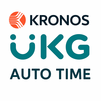

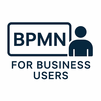
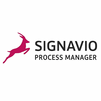

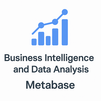
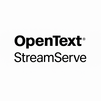



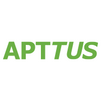


 Join our Live Instructor-Led online classes delivered by industry experts
Join our Live Instructor-Led online classes delivered by industry experts